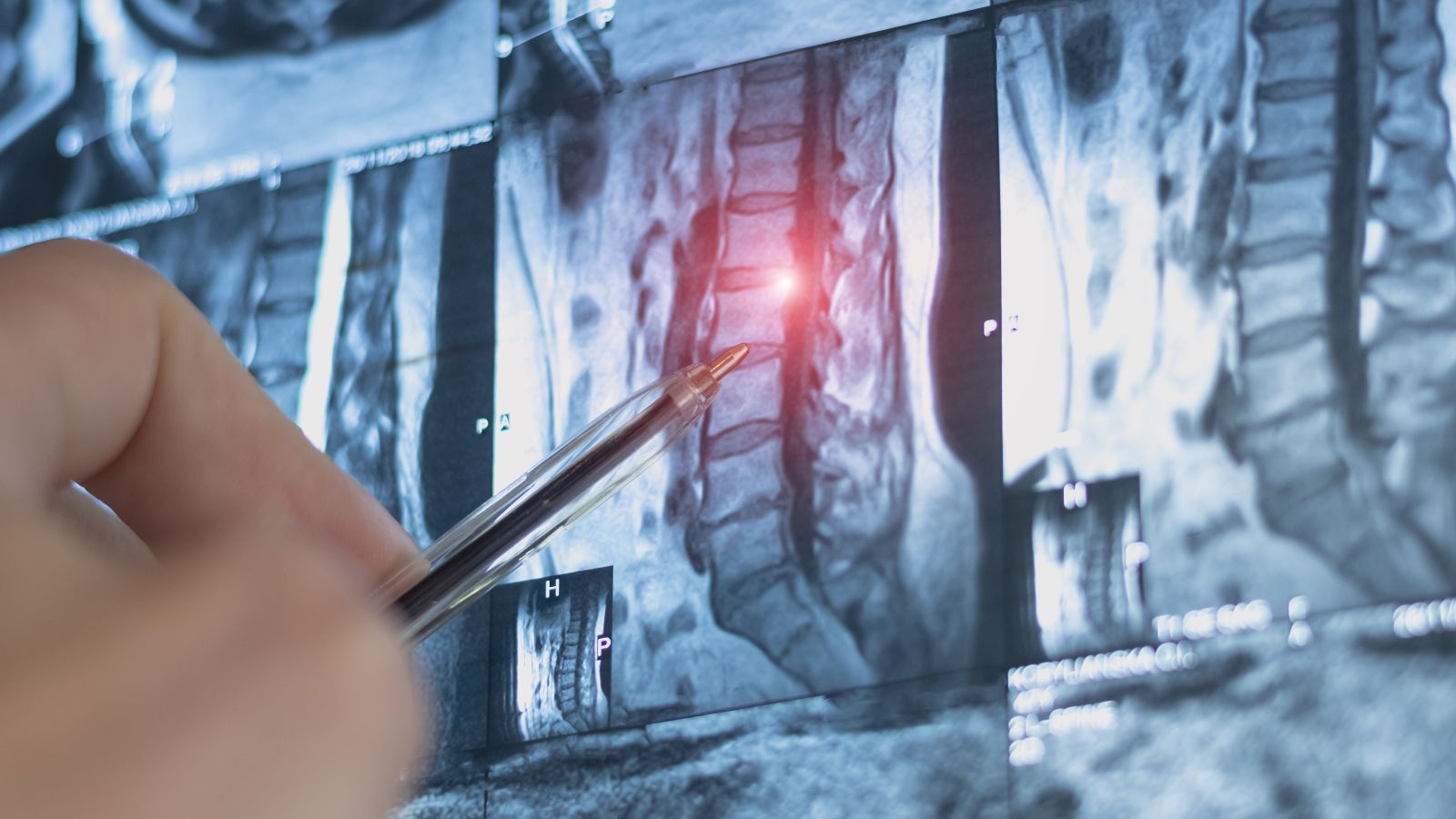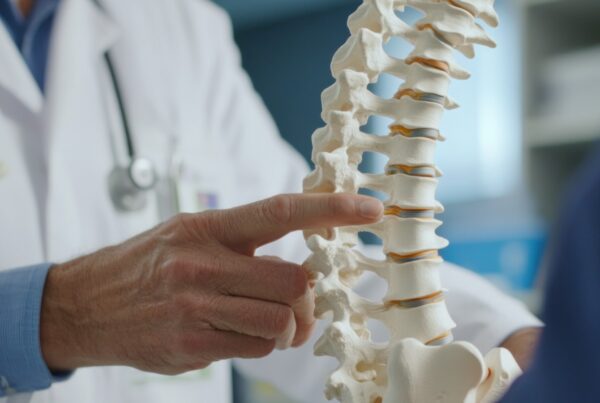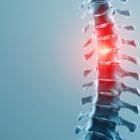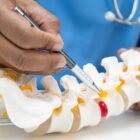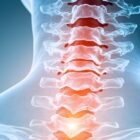Are you dealing with numbness and/or tingling in your arms and hands, trouble balancing, or ongoing back pain that hasn’t gotten better with treatments like physical therapy or medication? Your doctor might suggest spinal fusion surgery. Learning about the different types of spinal fusion can help you talk more easily with your doctor about which option might work best for you.
What is a Spinal Fusion?
Spinal fusion is a surgery that permanently joins two or more bones (vertebrae) in your spine. This prevents abnormal and painful movement between these bones, providing stability and reducing pain. During the surgery, your doctor places bone material between the vertebrae and may use metal plates, screws, or rods to hold everything in place while the bones heal together.
Types of Spinal Fusion Based on Approach
The location of your neck or back problem and your specific condition will help your doctor determine the best surgical approach. Each method has its benefits and is more effective for particular spine problems.
Anterior cervical discectomy and fusion (ACDF)
ACDF is for neck problems. The surgeon reaches the spine through a small cut in the front of the neck. This method:
- Gives direct access to the discs and bones in the neck
- Causes minimal disruption of the neck muscles
- Often allows faster recovery than approaches from the back
ACDF is one of the most common types of neck fusion. It is effective for herniated discs, worn-out discs, and certain types of neck fractures.
Posterior cervical fusion (PCF)
PCF approaches the cervical spine from the back of the neck. The surgeon makes an incision along the middle of the back of the neck. This method:
- Provides excellent access to the spinal canal
- Works well for conditions affecting the back portion of the spine
- Offers good stability for specific neck conditions
This approach is often used to treat cervical spinal instability, fractures, or deformities that can’t be addressed from the front of the neck.
Cervical disc replacement (as an alternative to fusion)
While not technically a fusion, cervical disc replacement is an important alternative to consider when discussing cervical spine procedures. This technique:
- Preserves motion at the treated level
- May reduce stress on adjacent vertebrae
- Can be an option for certain patients who would otherwise need ACDF
Disc replacement is typically considered for one or two level disc disease in the neck when there is minimal arthritis and good overall alignment.
Anterior lumbar interbody fusion (ALIF)
In ALIF surgery, the doctor reaches your spine from the front through a cut in your belly. This method:
- Avoids disturbing your back muscles
- Allows for a larger implant, which can provide better support and restored alignment
- May cause less pain after surgery
ALIF works well for lower back conditions, such as worn-out discs or slipped vertebrae.
Posterior lumbar interbody fusion (PLIF)
PLIF surgery approaches your spine from the back. The surgeon makes a cut along the middle of your lower back. This method:
- Gives direct access to pinched nerves
- Allows removal of bone spurs and herniated disc material
- Provides a good view of the nerve structures
Doctors often use this approach to treat narrowing of the spine, herniated discs, and worn-out discs in the lower back.
Transforaminal lumbar interbody fusion (TLIF)
TLIF also approaches from the back, but from a more angled position. This method:
- Needs less pulling on the nerves and spinal cord
- Reaches the disc space through natural openings where nerves exit the spine
- Can involve less disruption of the back muscles and less invasive approach
Doctors often recommend TLIF where minimally invasive surgery is indicated or in revision situations
Lateral lumbar interbody fusion (LLIF)
LLIF reaches the spine from the side through the patient’s flank. This is a less invasive method that:
- Avoids major blood vessels and nerves
- Causes less disruption to the back muscles
- Allows placement of a larger implant for better stability and alignment
This approach works well for worn-out discs, curved spine (scoliosis), or slipped vertebrae, especially when multiple levels need treatment.
Types of Spinal Fusion Based on Technique
Beyond the surgical approach, spinal fusion surgeries also differ in the techniques used during the operation.
Traditional open spinal fusion
Traditional open fusion uses a larger incision that provides the surgeon with a direct view of the spine. This method:
- Gives surgeons the best visibility and access
- May be needed for complex cases or significant deformities
- Usually requires a longer recovery time
While less invasive options are becoming increasingly popular, traditional open fusion remains the right choice for certain conditions, particularly in complex cases.
Minimally invasive spinal fusion
Minimally invasive fusion utilizes smaller incisions and specialized tools to access the spine. This technique:
- Causes less disruption to the surrounding muscles and tissues
- Often results in less bleeding and pain after surgery
- Generally allows for faster healing and return to normal activities
Many different types of fusion can use minimally invasive approaches.
It's time to get back
to doing what you love.
Types of Bone Material Used in Spinal Fusion
The type of bone material used in spinal fusion can also vary depending on the patient’s needs and the surgeon’s preference.
Your bone (autograft)
This uses bone taken from your own body, usually harvested from the non-structural parts of your spine which are removed in order to relieve the pressure on your spinal cord and nerves. In some rare cases, the bone can be taken from the hip pelvic area. This method:
- Has no risk of disease transmission
- Provides all the elements needed for bone growth
- Is considered the best option for promoting fusion
The main downside is that fusion surgery sometimes requires more bone than can be harvested. Taking extra bone from a second surgical site, which can cause extra pain during recovery.
Donor bone (allograft)
This uses bone from a donor, usually from a bone bank. This option:
- Doesn’t require a second surgical site
- Reduces operation time
- Still helps bones grow together
Donor bone is carefully processed to ensure safety and works well for many patients.
Artificial bone substitutes
These are artificial materials designed to work like real bone. These materials:
- Don’t require harvesting any bone
- Come in various forms and materials
- May be combined with biological factors to help fusion
These options continue to improve with advances in materials science.
Choosing the Correct Type of Spinal Fusion
The best approach for your spinal fusion depends on several factors:
- The specific condition being treated
- Where and how extensive the problem is
- Your overall health
- Your surgeon’s expertise and recommendation
At Neurosurgeons of New Jersey, our specialists have experience with all types of spinal fusion procedures. We carefully evaluate each patient to determine the most suitable approach, taking into account both the effectiveness of the procedure and its impact on your recovery.
Recovery after Spinal Fusion
Recovery time varies depending on the type of fusion performed and individual factors. Generally:
- Less invasive procedures allow for faster recovery
- Most patients can return to light activities within a few weeks
- Complete healing of the bone may take several months
Your surgeon will provide you with specific spinal fusion recovery guidelines for your recovery, tailored to your procedure and condition.
Is Spinal Fusion Right for You?
While spinal fusion can provide significant relief for many patients with chronic back pain, loss of balance, shooting numbness and tingling down their arms, or other neurological symptoms, it’s not right for everyone. The decision to have spinal fusion should come after thorough discussion with a qualified neurosurgeon who can explain the benefits, risks, and alternatives for your situation.
At Neurosurgeons of New Jersey, we believe in a patient-centered approach, exploring all treatment options before recommending surgery. Our specialists are experts in determining which patients are most likely to benefit from different types of spinal fusion procedures.
Request a Consultation
If you’re suffering from ongoing back pain and want to learn more about spinal fusion options, we invite you to schedule a consultation with one of our specialized neurosurgeons. Together, we can develop a personalized treatment plan to help you find relief and improve your quality of life.
Call us at 551-284-3265 or complete our online form to schedule your evaluation with one of our spine specialists.
FAQs
How long does a typical spinal fusion surgery take?
Most spinal fusion surgeries last between 2 and 6 hours, depending on the procedure’s complexity and the number of spine levels that need to be fused.
Will I need to wear a brace after spinal fusion surgery?
Many patients require the use of a back or neck brace for a few weeks after surgery to maintain spine stability while it heals. Your doctor will determine if you need a brace and for how long.
How soon can I drive after spinal fusion surgery?
Most patients can resume driving 2-4 weeks after surgery, although this timeframe may vary depending on the type of fusion and your individual recovery progress. Your surgeon will give you specific guidance.
Will I set off metal detectors after having a spinal fusion with hardware?
Some patients with metal implants may trigger metal detectors, but modern security systems are usually sophisticated enough to determine the location of the metal. It’s helpful to carry a medical ID card describing your implants.
Can a spinal fusion be reversed if I’m not satisfied with the results?
No, spinal fusion permanently joins vertebrae together and cannot be reversed. This is why it’s important to carefully consider this option and discuss all alternatives with your surgeon beforehand.
What happens to the levels above and below my fusion?
The vertebrae next to a fusion may experience increased stress and motion, which can potentially lead to accelerated wear and tear. This is called “adjacent segment disease.” Your surgeon will discuss ways to minimize this risk.

About Livingston
Our team of board certified physicians, located in Livingston, New Jersey, are dedicated to bringing you the latest developments and treatment options for spinal surgery. We strive to produce the most clarified & clear content to help you make informed decisions on your medical journey. The road to feeling like your true self should not feel lonely- Let us help you. Please call us to schedule a consultation and speak to one of our team members.

